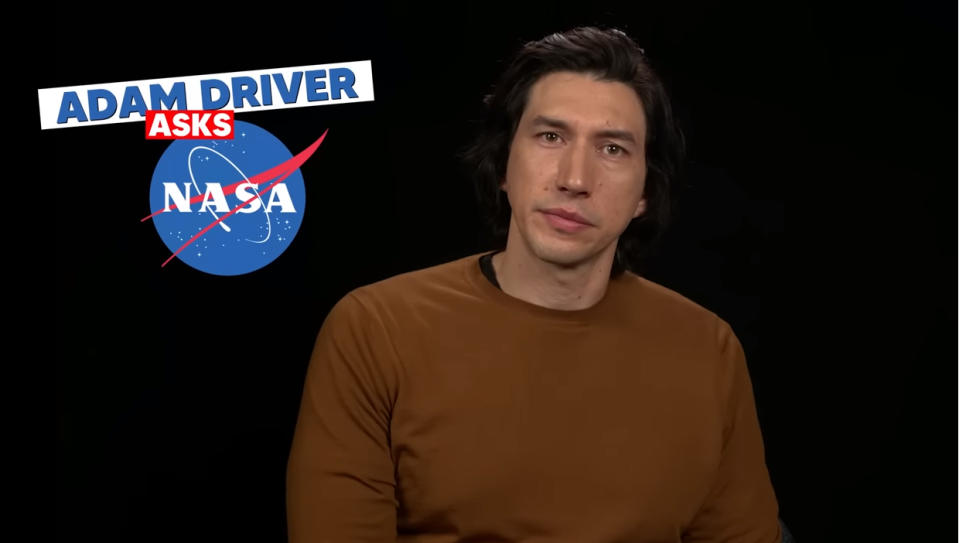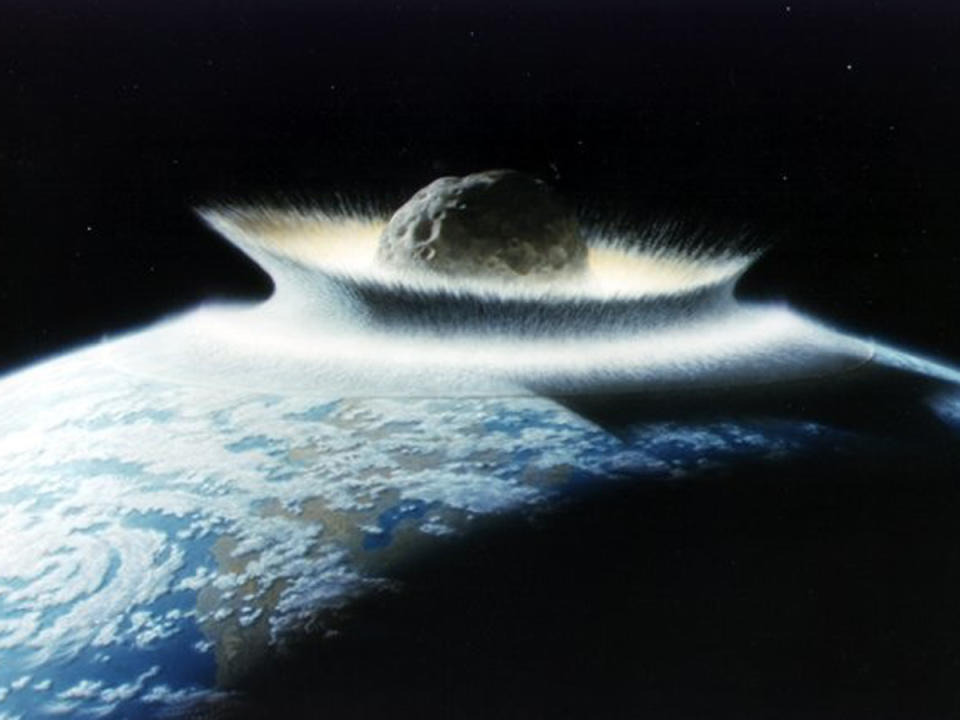'65' star Adam Driver asks NASA about the asteroid threat to Earth (video)

The extinction of the dinosaurs more than 65 million years ago is a striking example of the devastation that an asteroid can wreak when it slams into Earth.
A newly released movie from Sony Pictures, fittingly titled "65," plays on the epic disaster. It tells the tale of an astronaut propelled back to the late Cretaceous period, just before a roughly 6-mile-wide (10 kilometers) asteroid hit Earth off the coast of Mexico, wiping out the dinosaurs along with three-quarters of the planet's plant and animal species. Adam Driver plays the hapless time-traveling astronaut, who's literally caught between a rock and a hard place (and some dinosaurs).
In a new video posted to NASA's YouTube channel, Driver asks agency experts some questions about asteroids and the danger they pose to Earth — and to humanity.
Related: What we know about the dinosaur-killing asteroid

Speaking to astronomer Kelly Fast, manager of NASA's Near-Earth Object (NEO) Observations Program, Driver first asks what would happen if we were to discover an asteroid like the dino-killing space rock speeding toward Earth today.
"The good thing is that we're really not that concerned about asteroids of that size," Fast answered. "Those large ones — most of them have been found. They're easier to spot. There are fewer of them."
The NASA astronomer explained that there are, however, undiscovered near-Earth asteroids that are still big enough to do considerable damage should they strike Earth.
"If an asteroid were discovered that was going to impact Earth," Fast said, "NASA's role would be to inform planning, to give information about the asteroid, about where the impact would happen, about what the effects might be, so that everyone would have the most up-to-date, accurate and expert information available."
Driver's next question concerned NASA's Double Asteroid Redirection Test (DART), which intentionally crashed a spacecraft into Dimorphos, the smaller member in the two-asteroid Didymos system. DART hit Dimorphos on Sept. 26, 2022, to see if its orbit could be altered.
DART succeeded, shortening the orbit of Dimorphos around Didymos by 33 minutes. But Driver wanted to know if something similar to the proof-of-concept test could be used to divert an asteroid off a collision course with Earth.

 Yahoo Autos
Yahoo Autos 